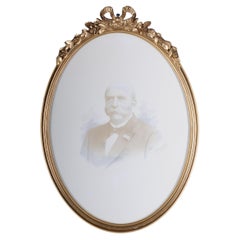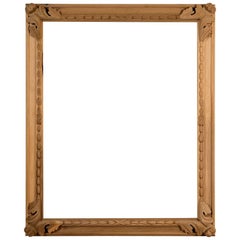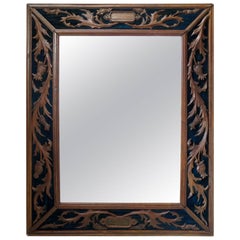Carved Picture Frames
to
10
206
36
4
22
57
127
40
33
33
57
8
1
3
3
6
14
30
23
1
21
16
14
14
13
11
9
8
7
6
5
5
3
1
136
131
88
83
76
154
71
209
137
26
16
15
Height
to
Width
to
246
227
239
75
35
29
15
14
Technique: Carved
20th Century French Louis XVI Picture Frame, Gold, Oval
Located in Berlin, DE
20th century French Louis XVI picture frame, gold
Oval body, solid wood, gilded with carved floral crowning ending with a classical bow.
The likeness of a portrait is signed bu...
Category
20th Century French Carved Picture Frames
Materials
Wood
Large 18th Century Gilt Frame
Located in San Francisco, CA
Large hand carved and gilded frame. Italyl, late 18th to early 19th century.
Category
18th Century Italian Antique Carved Picture Frames
Materials
Wood
Large Giltwood Frame
Located in Alessandria, Piemonte
Large, antique, perfect giltwood frame, suitable for painting or mirror or headboard. On request I also have an ornamental frieze to place on top.
Internal measurement: cm. 215,5 x ...
Category
Early 19th Century French Louis XVI Antique Carved Picture Frames
Materials
Fruitwood
$10,639
Hand Carved Poplar Frame with Large Acanthus Leaf Corners
Located in New York, NY
Hand Carved Poplar Frame With large Acanthus Leaf Corners
H. 44" x W. 35"
Category
Late 20th Century American Renaissance Carved Picture Frames
Materials
Poplar
19th Century Florentine Frame With Gold Leaf
Located in Austin, TX
Evoking the lavish opulence of the 19th century, this Florentine Frame stands as a testament to the magnificence of the period's decorative arts. Its confident gold leaf application ...
Category
19th Century Italian Antique Carved Picture Frames
Materials
Giltwood
Carved Napoleon III Oak and Velvet Mirror, France, 19th Century
Located in Isle Sur La Sorgue, Vaucluse
Large and gorgeous frame, with hand-carved thistles motifs applied to a deep teal blue velvet background. The wood is oak. New mirror.
Category
19th Century French Napoleon III Antique Carved Picture Frames
Materials
Velvet
Recently Viewed
View AllMore Ways To Browse
1913 Photo Frame
1920s Picture Frame Made A Wooden Propeller
3 Oval Gold Mirror
Armand Wargny
Art Deco Dura Frame
Beatles Autograph
Blue Lacquer Picture Frame
Brass Victorian Ring Frames
Crown Of Thorn Frame
Culver Antiques
Dorvilliers Frames
Double Sided Picture Frame
Dream Caused By The Flight Of A Bee
Dura Co
Eastlake Picture Frame
Glass Rod Picture Frame
Gothic Album
John Baker Smith





